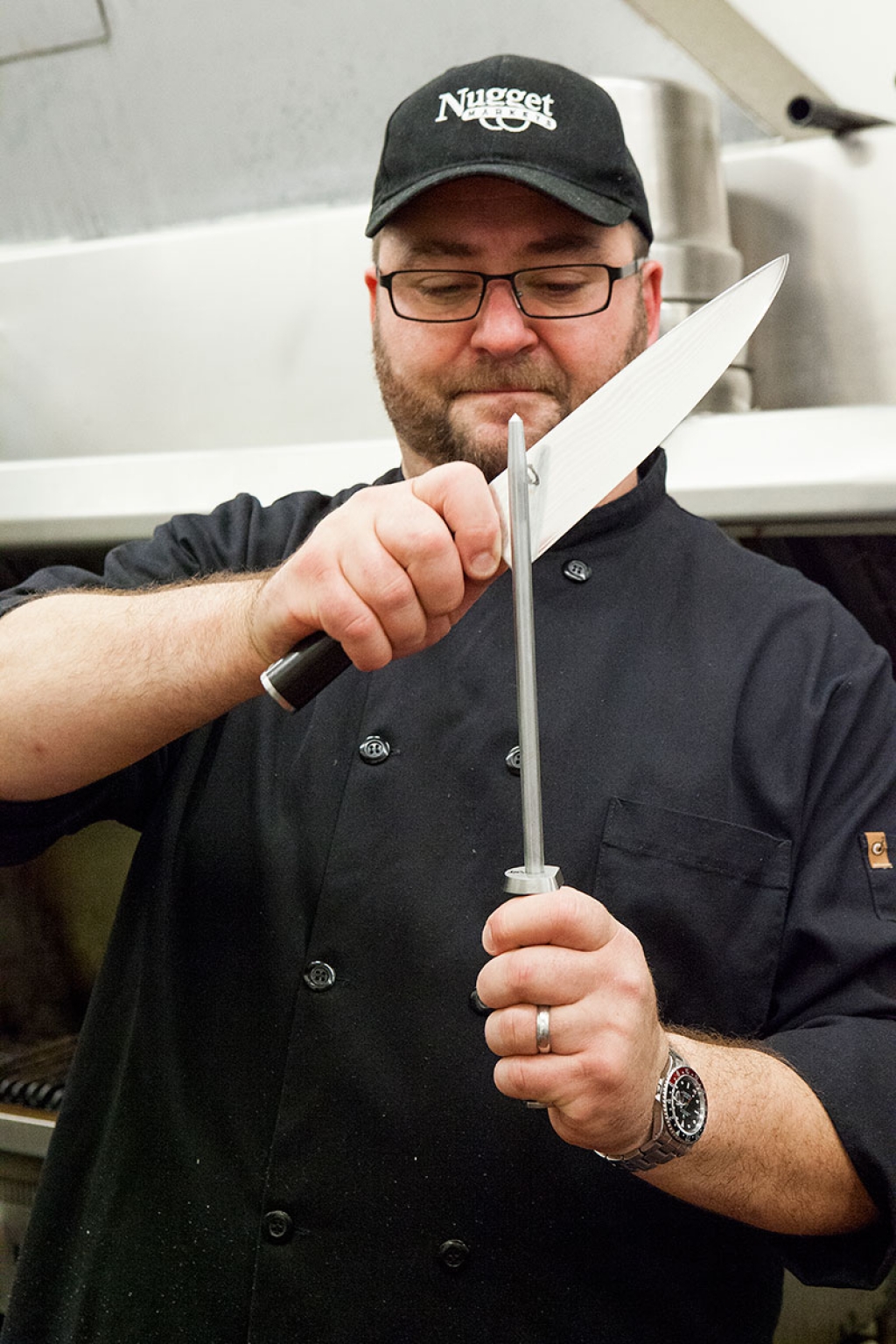Daily Dish the Nugget Markets blog

The Cutting Edge
Please note that this is an older article. Any products or services pictured or described may have changed or may no longer be available. Thank you for visiting!
When working in the kitchen, it’s important to keep your tools in good repair. A sharp knife especially will help you work quickly, efficiently and safely. But if your blades are dull, don’t fret—you can use a sharpening stone and steel to give your knives the cutting edge, and keep it!
When working in the kitchen, it’s important to keep your tools in good repair. A sharp knife especially will help you work quickly, efficiently and safely. But if your blades are dull, don’t fret—you can use a sharpening stone and steel to give your knives the cutting edge, and keep it!
Using a sharpening stone:
Hold the knife firmly at a 20° angle to the stone. Pressing gently on the blade with a guiding hand, draw the knife’s edge across the stone from tip to heel. Use light, smooth strokes always moving in the same direction. Make the same number of strokes on each side of the blade to ensure even sharpening, and be careful not to oversharpen. Finish by using the steel.
Using a sharpening steel:
Hold the steel away from yourself and pull the knife across the steel at a 20° angle, starting with the heel and ending with the tip. Make light, even strokes across the steel, alternating each side of the blade between strokes. (Be careful not to hit the steel guard at the end of the stroke.) Repeat five or six times for each side of the knife, then wipe the blade clean.
While the stone is used to sharpen the knife’s blade, the steel can smooth the edge and maintain sharpness on a regular basis. For both the stone and steel, be careful not to grind the blade and always keep a steady angle. Less than 20° won’t be effective at sharpening or maintaining the blade, and more than 20° can actually dull the blade. Last but not least, always remember to be careful!